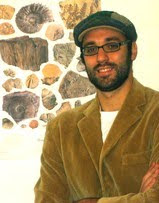"So it's an established fact that in Italy during the period between 1971-1974, a music movement existed where bands would challenge each other to see who could be the most imaginative, who could create the album for the ages. They were all painters and sculptors just as in Renaissance Italy."
-Tom Hayes / Gnosis
The Italian progressive rock scene was born in the early 70s, inspired by the progressive movement in Britain, but then developing features of its own that makes it a separate musical genre: Rock Progressivo Italiano (RPI).
The arrangements of Rock Progressivo Italiano incorporate elements drawn from classical, jazz, and the diverse musical traditions of Italy. Indeed Italian progressive rock expands the timbral palette of traditional rock instrumentation with aggeggi, ottavino, mandoloncello and clavicembalo. Some bands abandoned the common Ionian and Aeolian modes (or, major and minor), choosing the rarer Mixolydian and Dorian scales, drawn from the ancient Aristoxenian tradition (dating back to the 4th century BC). Although RPI’s lyrics are traditionally Italian, some bands reached international fame.
The arrangements of Rock Progressivo Italiano incorporate elements drawn from classical, jazz, and the diverse musical traditions of Italy. Indeed Italian progressive rock expands the timbral palette of traditional rock instrumentation with aggeggi, ottavino, mandoloncello and clavicembalo. Some bands abandoned the common Ionian and Aeolian modes (or, major and minor), choosing the rarer Mixolydian and Dorian scales, drawn from the ancient Aristoxenian tradition (dating back to the 4th century BC). Although RPI’s lyrics are traditionally Italian, some bands reached international fame.
'Cento Mani e Cento Occhi' from tha album Darwin! by Banco Del Mutuo Soccorso. The song deals with the development of social organization in hominids.
One of these is Banco del Mutuo Soccorso, a popular progressive rock band in the 1970s, still being active (I saw them live: what an emotion!). In 1972 they released their second album, Darwin!, comprising 7 songs unified by an elaborate, overarching theme: Evolution of life on earth. Geology, paleontology and biology are the undisputable source of inspiration since the first track (translation and original text):
And if in the fossil of an atavic skull
I rediscover forms that resemble me…
E se nel fossile di un cranio atavico
riscopro forme che a me somigliano…
- Banco del Mutuo Soccorso, Evoluzione (Evolution)
Cover art of Darwin!, by Bando del Mutuo Soccorso
The complete tracklist of Darwin! is:
1. L'Evoluzione (Evolution)
2. La conquista della posizione eretta (The conquer of the upright position)
3. Danza dei grandi rettili (Dance of the big reptiles)
4. Cento mani e cento occhi (A hundred hands and a hundred eyes)
5. 750,000 anni fa ... L'amore? (750,000 years ago ... Love?)
6. Miserere alla storia (Miserere to history)
7. Ed ora io domando tempo al tempo ed egli mi risponde ... Non ne ho! (And now I ask Time for time and He answers me ... I don't have it!)
As we already saw for the Birdsongs of the Mesozoic, geologic themes could represent evocative musical soundscapes. The same could be said for the lyrical imagery, as expressed by the prehistoric worlds evoked by Darwin!:
Gray layers of lava and coral
damp skies and no color
here the world is breathing
moss and lichen green sponges of earth
are the greenhouse for the sprout to come.
Strati grigi di lava e di corallo
cieli umidi e senza colori
ecco il mondo sta respirando
muschi e licheni verdi spugne di terra
fanno da serra al germoglio che verrà.
- Banco del Mutuo Soccorso, Evoluzione (Evolution)
Banco del Mutuo Soccorso: La Danza dei Grandi Rettili (Dance of the Big Reptiles), from the album Darwin!















